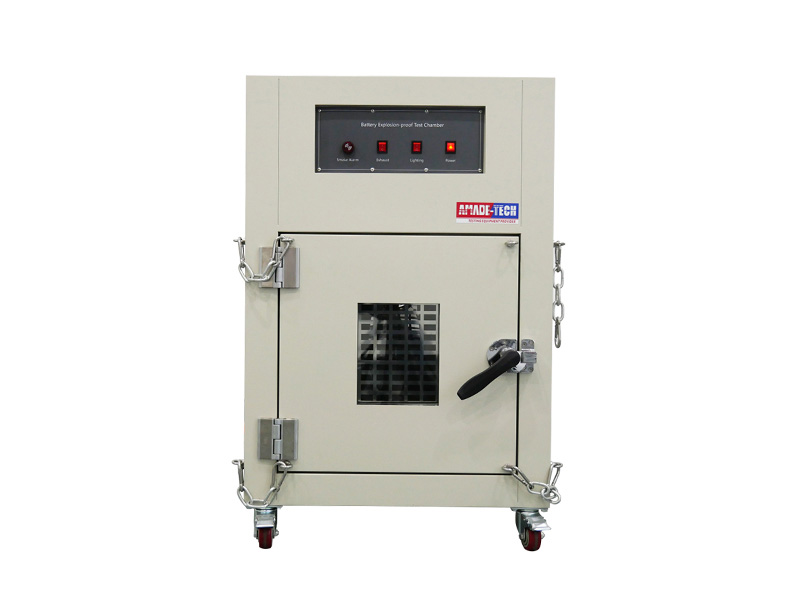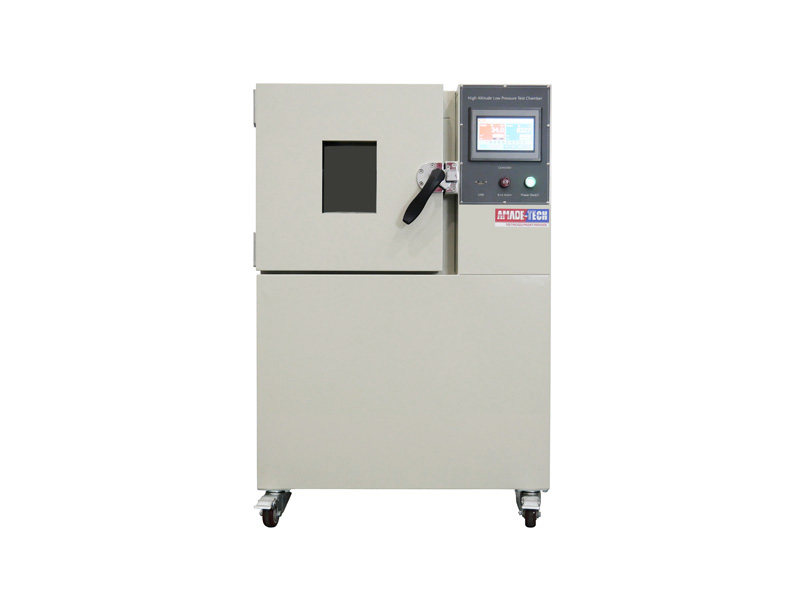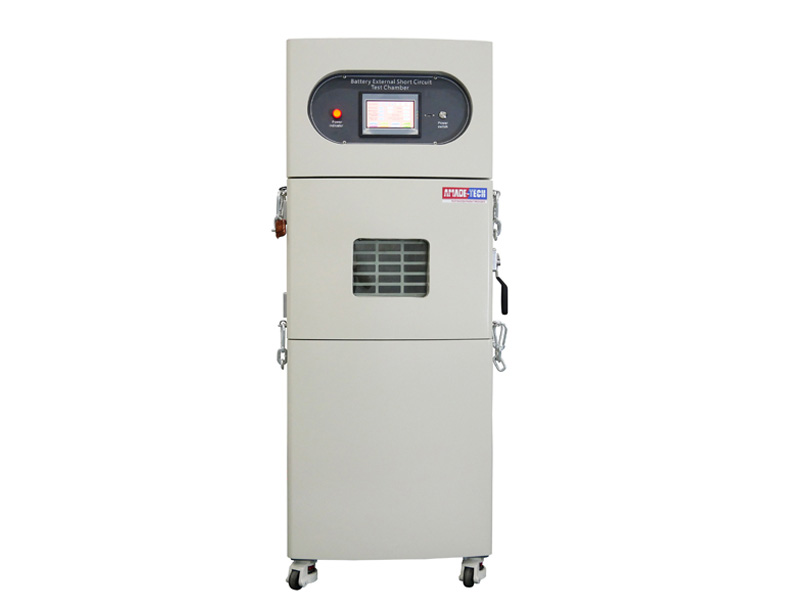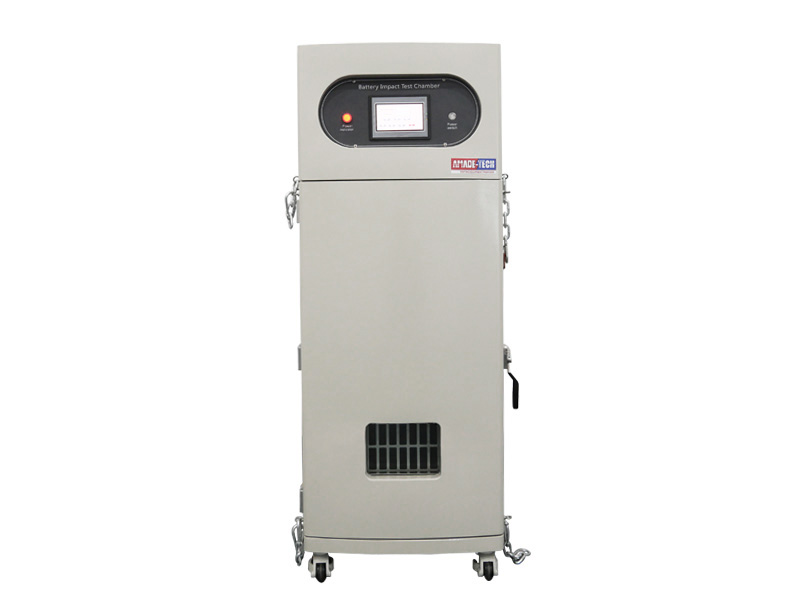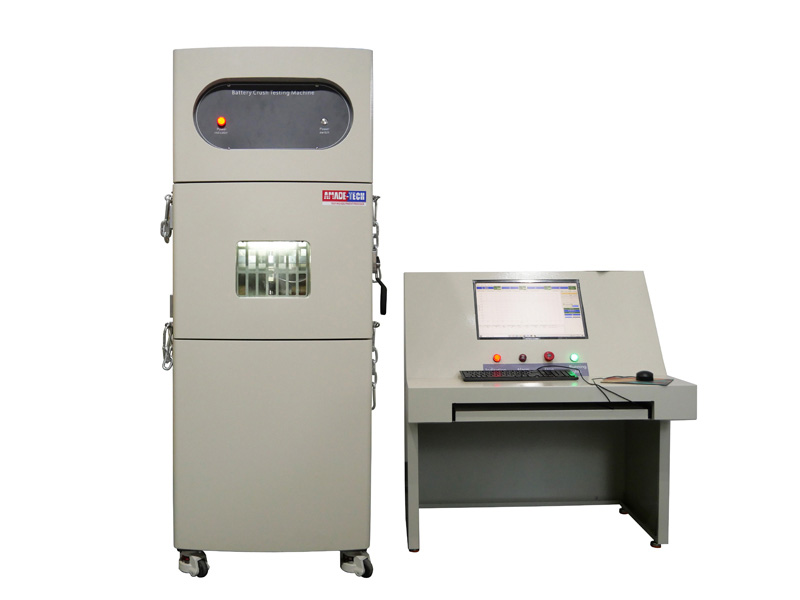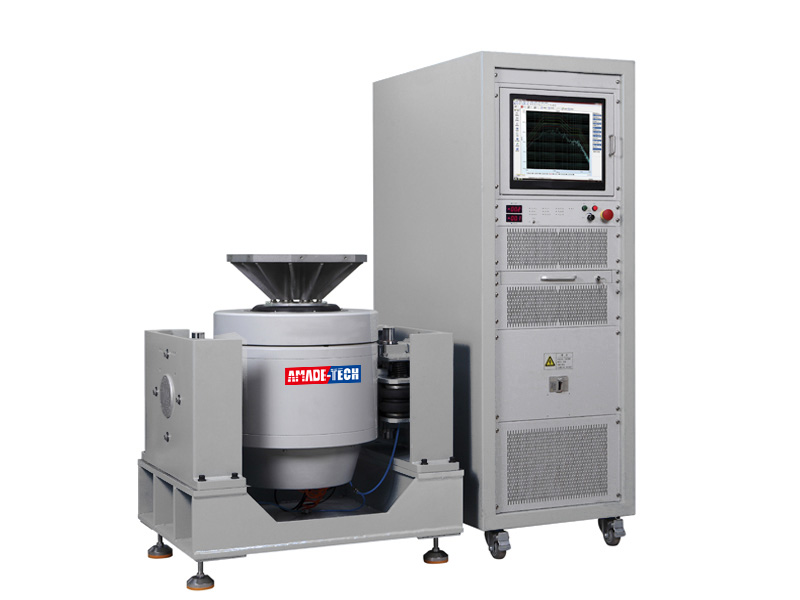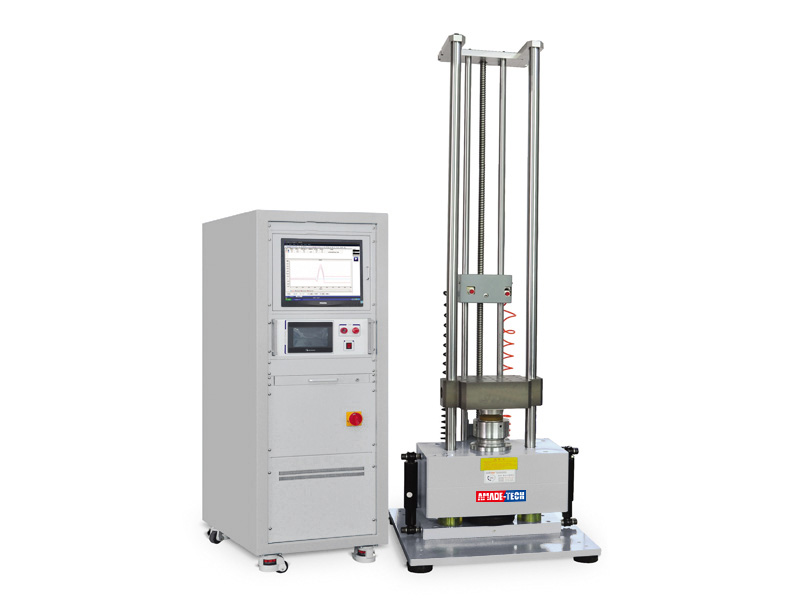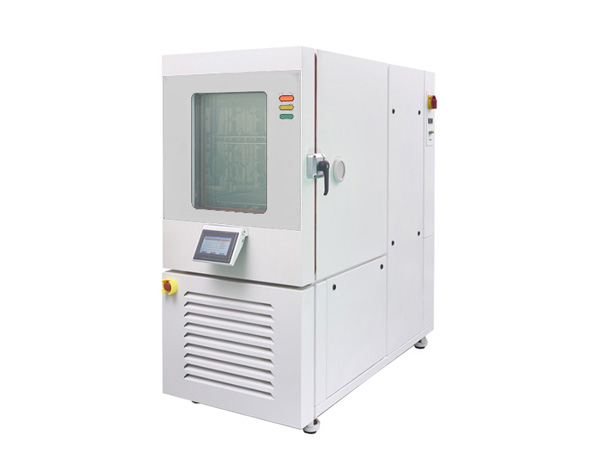When it comes to UN38.3 battery testing equipment, we first have to figure out what UN38.3 is.
UN38.3 is a set of test programs and procedures specially formulated for the safe transportation of lithium batteries in section 38.3 of “Recommendations on the Transport of Dangerous Goods, Manual of Tests and Criteria”. Different test items can simulate the extreme conditions and battery abuse situations that lithium cells or batteries may encounter in various transportation scenarios. It is to evaluate whether the tested samples can resist these adverse factors and ultimately ensure the safety of batteries in actual transportation.
Amade Tech is one professional manufacturer and supplier of lithium metal and lithium-ion battery testing equipment for UN38.3. A complete set of equipment at attractive prices is available here.
No. | Test Items | Required Equipment | Test Objects |
T.1 | Altitude simulation | High-altitude low- pressure test chamber | Cell types Non-rechargeable battery types Rechargeable battery types ** ^^ |
T.2 | Thermal test | Thermal test chamber | Cell types Non-rechargeable battery types Rechargeable battery types ** ^^ |
T.3 | Vibration | Electromagnetic vibration tester | Cell types Non-rechargeable battery types Rechargeable battery types ** ^^ |
T.4 | Shock | Shock Tester | Cell types Non-rechargeable battery types Rechargeable battery types ** ^^ |
T.5 | External short circuit | External short circuit tester | Cell types Non-rechargeable battery types Rechargeable battery types ** ^^ |
T.6 | Impact | Impact tester | Cell types ** ## ^^ |
Crush | Crush test machine | ||
T.7 | Overcharge | Rated DC power supply Explosion-proof test chamber | Rechargeable battery types ** |
T.8 | Forced discharge | Programmable DC load Explosion-proof test chamber | Cell types ** ## ^^ |
Remark: “**” refers to rechargeable single cell batteries with overcharge protection | |||
“##” refers to a component cell that is not transported separately from the battery | |||
“^^” refers to a component cell that is transported separately from the battery | |||
What Is Battery Testing Equipment for UN38.3?
Battery Testing Equipment for UN38.3 is a series of equipment used to carry out the test items for the safe transportation of lithium metal and lithium-ion batteries in Section 38.3 of the United Nations’ clauses on the transport of dangerous goods.
Battery Testing Equipment for UN38.3 contains more than a dozen different test machines. They are altitude simulation test chamber, Thermal test chamber, Vibration tester, shock tester, external short circuit tester, impact tester, crushing tester, explosion-proof test chamber, rated DC power supply, programmable DC load, etc.
Can Your UN 38.3 Battery Testing Equipment Withstand Battery Explosions and Fires?
Each of our UN38.3 battery test boxes consists of an inner box and an outer box with a certain gap for thermal insulation. The sheet metal material of the outer box is generally the cold-rolled plate with a thickness of 1.5mm and is treated with baking paint. The material of the inner box is generally 1 mm to 2 mm thick 304 stainless steel plate with reinforcing ribs, rather than ordinary iron plates, to ensure that the box has enough strength to withstand the impact of battery explosion and excellent fire resistance.
The thickness of the inner box sheet metal is also related to your battery samples. We can make corresponding adjustments to the material specifications according to the specifications of your batteries to be tested. You can contact us and tell us the specimen size, energy density, and other parameters of the sample you want to test. Our sales consultants will get back to you as soon as possible.
In addition to the solid and sturdy test chamber, the equipment has other explosion-proof and fire extinguishing devices. There is a pressure relief port in the rear of the device. If the battery under test in the chamber explodes, the pressure can be released through the port. After the pressure relief is completed, the pressure relief door will automatically close. If the battery catches fire, you can view it through the explosion-proof glass window. We can also add a network camera to monitor the status of the battery under test inside the chamber. If the battery is burning, The fire can be extinguished automatically by remote control.
Why Is UN38.3 Battery Testing Equipment Important to Batteries and Products containing Batteries?
UN38.3 refers to Part 38.3 of the “Manual of Tests and Criteria for the Transport of Dangerous Goods” formulated by the United Nations to transport dangerous goods. It requires that lithium batteries pass a series of prescribed tests before they are transported to ensure their safety of lithium batteries.
According to civil aviation regulations, airlines and airport cargo receiving departments must review the transportation documents of lithium batteries, the most important of which is the UN38.3 safety test report. If this test report cannot be provided, Your cargo will not be allowed into the cabin.
Therefore, as long as the shipper has air transportation requirements for lithium-ion cells/batteries or products with built-in lithium-ion batteries, they are required to carry out the UN38.3 test to obtain a certificate. The UN38.3 battery testing devices are indispensable instruments that testing institutions or manufacturers must use to complete these tests.
Can Battery Testing Equipment for UN 38.3 be Used for Other Test Standards?
Sure.
Our battery testing equipment not only meets the test items of UN 38.3. Most of these devices can simultaneously perform other battery testing standards, such as IEC 62133, UL 1642, IEC 62660, IEC 62619, EN 50604-1, ISO 12405-3, etc.
If you would like to inquire about other equipment for battery safety tests, please let us know the test criteria you follow. We will give you complete support.
What Are Safety Features Available for AMADE TECH Battery Testing Equipment for UN38.3?
Safety features include the gas detector, smoke detector, fire extinguishing device, and video surveillance device are allowed to be fitted in the chamber, and they are optional with extra cost.
Please talk with our sales engineers if you have any additional requirements for your personalized features.
What Test Items Are UN38.3 Battery Testing Equipment Used for? And What Are the Testing Process and Evaluation Criteria?
Test T.1: Altitude Simulation
Required apparatus:
High-Altitude Low-Pressure Test Chamber
Required ambient temperature:
(20±5)℃
Test Procedures:
1) Place the prepared specimen into the test chamber, then close and lock the door well to ensure reliable airtightness inside the chamber.
2) Turn on the machine and set an intended pressure of 11.6 kPa (or less) and test duration (at least 6 hours) by the touch screen on the control panel.
3) Activate the machine and allow it to reach the target pressure. The machine starts timing automatically when the air pressure.
4) The machine beeps to indicate the end of the test when the scheduled test time is reached.
Evaluation criteria:
The specimen is eligible if
- There is no leakage, no venting, no disassembly, no rupture, and no fire.
- The open-circuit voltage of each test cell or battery after testing is not less than 90% of its voltage immediately before the test.
Remark: The voltage requirement is not applicable to test cells and batteries at fully discharged states.
Test T2: Thermal Test
Required apparatus:
Battery Thermal Test Chamber
Required ambient temperature:
(20±5)℃
Test Procedures:
1) Place the prepared specimen into the test chamber, then close and lock the door.
2) Turn on the machine and set the high test temperature to 75℃exposing at least 6 hours(at least 12 hours for large batteries and cells), and set the subsequent low test temperature to -40℃, exposing for at least 6 hours(at least 12 hours for large batteries and cells). The interval between test temperature extremes will be no more than 30 min.
3) After setting, actuate the machine to allow the test for 10 cycles (The process in which the sample is subjected to a complete high and low-temperature exposure is a cycle).
4) After 10 cycles are over, store the specimen at ambient temperature for 24 hours.
Evaluation criteria:
The specimen passes the test if
- There is no leakage, no venting, no disassembly, no rupture, and no fire.
- The open-circuit voltage of each test cell or battery after testing is not less than 90% of its voltage immediately before this procedure.
Remark: The voltage requirement is not applicable to test cells and batteries at fully discharged states.
Test T3: Vibration Test
Required apparatus:
Electromagnetic Vibration Tester
Test Procedures:
1) Set up the machine. (We will provide you with a video guide on this procedure.)
2) Fasten one face of the specimen to the machine’s platform without distorting the cells to ensure faithful transmitting of vibration.
3) Turn on the machine, and the computer built in the control cabinet, then set the necessary parameters. (It requires the vibration with a sinusoidal waveform with a logarithmic sweep between 7 Hz and 200 Hz and back to 7 Hz traversed in 15 minutes. )
4) After one cycle of repeated 12 times for a total of 3 hours for one face is completed, change the test face to perform another same cycle until three mutually perpendicular mounting positions of the specimen are subjected to vibrations, for a total of 9 hours.
Note: As the logarithmic frequency sweep of cells and small batteries is different from that of large batteries, please refer to section 38.3.4.3.2 of UN38.3 for details when testing.
Evaluation criteria:
The specimen is eligible if
- There is no leakage, no venting, no disassembly, no rupture, and no fire during and after the test.
- The open-circuit voltage of each test cell or battery after testing in its perpendicular mounting position is not less than 90% of its voltage immediately prior to this procedure.
Remark: The voltage requirement is not applicable to test cells and batteries at fully discharged states.
T.4 Shock Test
Required apparatus:
Mechanical Shock Tester
Test Procedures:
1) Set up the machine. (We will provide you with a video guide on this procedure.)
2) Secure one surface of the specimen to the mounting area of the machine.
3) Turn on the machine, and the computer built in the control cabinet, then set the necessary parameters.
Note: 3.1) A half-sine shock of peak acceleration of 150 / 50 gn and pulse duration of 6 / 11 milliseconds are applied to each of the small cells / large cells, respectively.
3.2) For batteries, the pulse duration for each small battery is 6 milliseconds, and that for each large battery is 11 milliseconds. The half-sine shock of peak acceleration each battery undergoes depends on the mass of the battery. Please refer to section 38.3.4.4.2 of UN38.3 for details when testing.
4) Change the direction or the mounting position in sequence to ensure each cell or battery suffers 3 shocks in the positive direction and in the negative direction respectively of each of 3 mutually perpendicular mounting positions, for a total of 18 shocks.
Evaluation criteria:
The specimen is qualified if
- There is no leakage, no venting, no disassembly, no rupture, and no fire.
- The open-circuit voltage of each test cell or battery after testing is not less than 90% of its voltage immediately before this procedure.
Remark: The voltage requirement is not applicable to test cells and batteries at fully discharged states.
T.5 External Short Circuit Test
Required apparatus:
External Short-circuit tester
Test Procedures:
1) Mount the specimen in the clamping device inside the chamber (if applicable) and attach the temperature measuring device to the external case of the specimen.
2) Turn on the machine and set parameters by means of the control panel to heat the ambient temperature inside the chamber until the specimen surface temperature reaches (57±4)℃.
3) Click to conduct a short circuit when the requirement on the external case temperature is met.
4) Set to continue the short circuit condition for at least one hour after the cell or battery external case temperature
4.1) has returned to (57±4)℃, or
4.2) has decreased by half of the maximum temperature increase observed throughout the test and remains below that value (applicable to the large batteries).
Evaluation criteria:
The specimen is qualified if
- The external temperature does not exceed 170℃.
- There is no disassembly, no rupture and fire during the test and within 6 hours after the test.
T.5 Impact / Crush Test
Required apparatus for the impact test:
Battery Impact Tester
Test Procedures:
1) Place the specimen of the cylindrical cells not less than 18 mm in diameter on a flat smooth surface, ensuring that its longitudinal axis is parallel to the flat surface.
2) Place a 316 stainless steel bar across the center of the sample and normal to it.
3) Operate the control panel to drop a 9.1 kg mass from a height of 61 cm at the intersection of the bar and sample in a controlled manner utilizing a vertical sliding track.
4) Each specimen is only allowed to be impacted once.
Required apparatus for the crush test
Battery Crush Tester
Test Procedures:
1) Open the test chamber door, then place a cell or component cell on the lower flat surface.
2) Set the parameters of test conditions (stated as below 3 conditions) and enable the upper flat surface to move downward to approach the specimen at a speed of 1.5 cm/s.
3) The crushing will be terminated automatically once the first of the below 3 options is reached:
3.1) The applied force of 13 kN is reached;
3.2) The voltage of the specimen drops by at least 100 mV;
3.3) The specimen is deformed by 50% or more
4) The specimen shall be observed for an extended 6 hours after crushing.
Note: Each specimen is only allowed to be undergone one crush, and the specimens to be tested shall not be subjected to other tests previously.
Evaluation criteria:
The specimen is qualified if
- The external temperature does not exceed 170℃.
- There is no disassembly and no fire during the test and within 6 hours after the test.
T.7 Overcharging
Required apparatus:
DC power supply & Explosion-proof battery test chamber
Test Procedures:
1) Put the specimen into an explosion-proof battery test chamber and connect it to a DC power supply.
2) Set the charge current twice the manufacturer’s recommended maximum continuous charge current and set the minimum test voltage as follows:
2a) The lesser of 2 times the maximum charge voltage of the battery or 22 V (Applicable to batteries whose recommended charge voltage is less than or equal to 18 V).
2b) 1.2 times the maximum charge voltage (suitable for batteries whose recommended charge voltage is more than 18 V).
3) Continue the test for 24 hours and leave it for 7 days at ambient temperature.
Evaluation criteria:
The specimen is qualified if there is no disassembly and no fire during the test and within 7 days after the test.
T.8 Forced Discharging
Required apparatus:
12 V DC power supply
An explosion-proof battery test chamber
Resistive load
Test Procedures:
1) Put the specimen into an explosion-proof battery test chamber and connect it in series with a 12 V D.C power supply at an initial current equal to the maximum discharge current prescribed by the manufacturer. (Connect a resistive load in series with the test cell to obtain the specified discharge current.)
2) Forcedly discharge each cell for a time interval (in hours) equal to its rated capacity divided by the initial test current (in Ampere).
Evaluation criteria:
The specimen is eligible if there is no disassembly and no fire during the test and within 7 days after the test.


